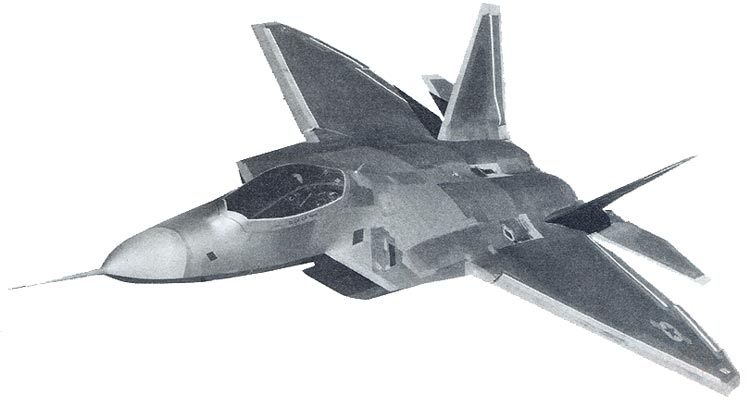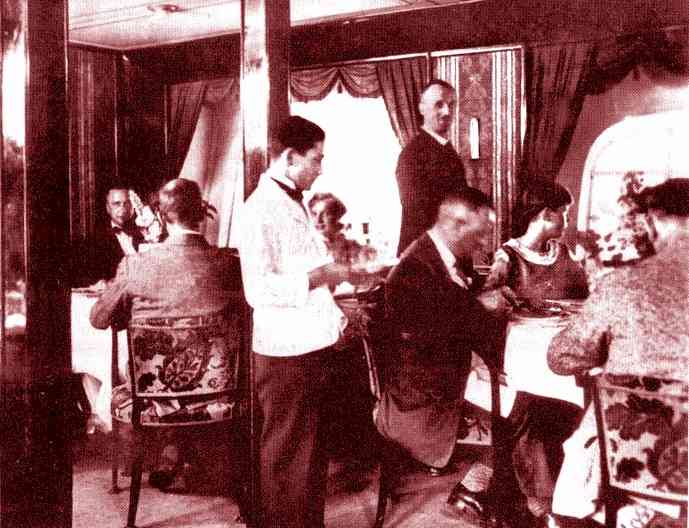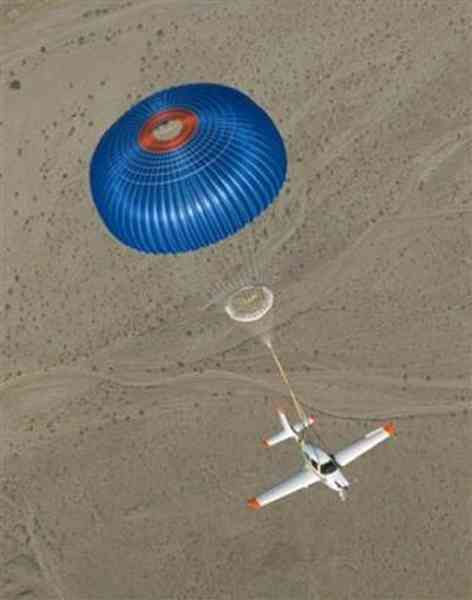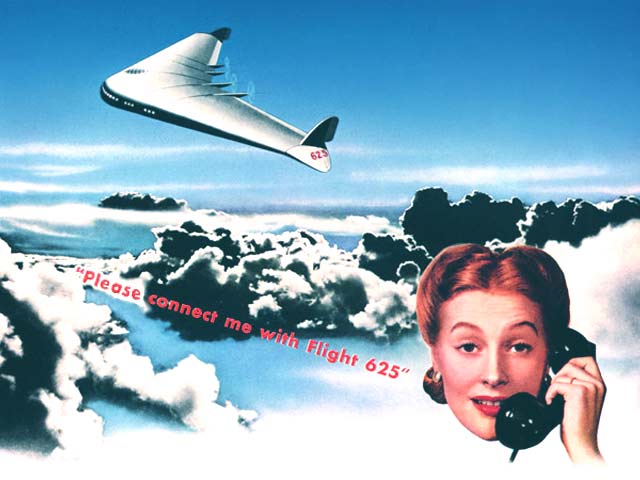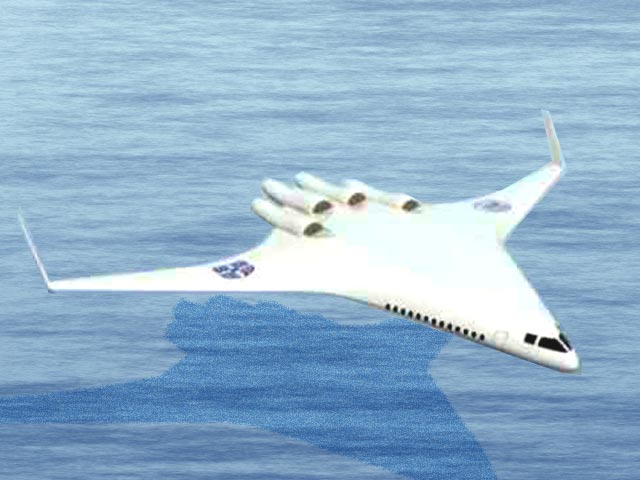Prove It Improves
Suggestion BoxAs a method of sending a missile to the higher, and even to the highest parts of the earth's atmospheric envelope, - The New York Times editorial, 1920 Further investigation and experimentation have confirmed the findings of Isaac Newton in the 17th century, - The New York Times, 1969 Supersonic: The Next ConcordeWith its final flight this year, the Concorde seemed to have joined the Spruce Goose and the De Havilland Comet among the Edsels of air travel, sending supersonic passenger flight into history. But all may not be lost on this front. Economics and noise regulations killed the Concorde. Profitable flights over land were prohibited because sonic booms produced by jets breaking the sound barrier - known as Mach 1, it's about 750 mph - smash windows and eardrums. However, an experiment earlier this year involving a big-nose. prototype fighter jet may be the salvation of dreams that flights from New York to Los Angeles will one day only take three hours. In August, a modified F-5 jet broke the sound barrier but produced less of a sonic boom on the ground. Still loud for commercial use, the plane proved that reshaping the nose of an aircraft can reduce sonic booms. Northrop Grumman, one of the sponsors of the F-5 experiment, suggests that a supersonic business jet may be the first practical use of this new technology. Experiments in "hypersonic" travel, more than five times the speed of sound, have made advances. Australian scientists reported their HyShot scramjet hit Mach 7.6 (about 5,600 mph) aided by a rocket launch. Scramjet stands for Supersonic Combustion Ramjet, a jet engine with no moving parts that burns fuel at supersonic speeds. Aerospace engineers consider this type of craft the future of high-speed aviation, promising to one day send travellers from New York to Tokyo in two hours.
photo caption: F-22 Raptor: may be last manned military fighter plane. Humans black out in high-speed turns, add weight better devoted to electronics and die in combat. Planes will ne manned from remote settings and will resemble video games. image credit John Rossino
In theory: Wait and See What the Future HoldsAviation visionaries have conjured up worlds filled with zeppelins, private air taxis and jet packs, all to no avail. As everyone knows, predicting the future of any technology is a dicey business at best. Still, when it comes to aviation, even the pros can't help themselves. In a year marking flight's centennial, techie magazines from Aerospace America to Popular Science have filled their pages with a multitude of predictions about what's on the horizon:
"One thing we can predict is that nobody can predict exactly what is going to happen," John Anderson, aerodynamics curator for the National Air and Space Museum, says.
Fly without Taking OffOr maybe you won't fly anywhere. Hate to travel, but love The Matrix? High-fidelity virtual reality networks may be the ticket. Instead of flying to meetings, videoconferencing has seen increases amid recent downturns in business travel. In July, Microsoft's Bill Gates outlined plans that he says will make videoconferences as routine as e-mail. On the leading edge of virtual reality is Interhet2, a large-scale test of the next-generation Internet sponsored by the government, universities and corporations. It aims to produce digital libraries, virtual laboratories, distance-independent learning and tele-immersion. Member universities are investing $80 million a year in the effort. And in the current Popular Science, well-known aircraft designer Burt Rutan argues that the well-heeled pornography industry will craft a virtual reality "where we can 'sit down' with someone and it will be indistinguishable from being there," within the next two decades - a benefit that would no doubt carry over to flight. "Still, there's a lot to be said for face-to-face contact," National Geographic's editor Bill Allen says. Airline designers think that tourists from the booming economies of China and India will want to visit Niagara Falls and the Colosseum in person, not over the Internet. Source: USA Today Thursday 11 December 2003
The Way We Fly Now
Airship splendour for an elite, pictured above, has long since given way to airline misery for the masses. A new book poses a remarkable solution. Review of the book Free Flight: From Airline Hell to a New Age of Travel by James Fallows How can a system be so technically advanced and admirable, yet lead to results so unpleasant for everyone?" wonders James Fallows in this delightful book. The system is air travel. When all goes well, you marvel at the speed and reliability of the technology. But often, all does not go well. You drive for miles to the airport, you queue for ages, you wait forever in the departure lounge. For this misery, Mr Fallows thinks there is a cure. He is admirably qualified to describe it: he is not just a top journalist but also an amateur pilot, and his book is built around a heart-stopping description of a flight across America with his wife and son. Free Flight makes some fascinating detours along the way. It describes, for example, the travails of setting up a new business (Cirrus, a family firm in Minnesota that makes small aeroplanes). And it lucidly explains the reason why pilots of small aeroplanes understand that they are riskier than big ones yet accept the risks, believing that most can be controlled. Flying across America in a private plane is a joy; a journey on a commercial airline can become a nightmare. Door-to-door, a flight of 500 miles or less (the majority of American flights) is no faster than driving a car. Why? Because, Mr Fallows argues, of the hub-and-spoke system, developed by the airlines since deregulation to cut their costs and fill their seats. More than 80% of America's airline travel now takes off from or lands at the busiest 1% of airports. Air traffic has grown roughly twice as fast as the economy for years - but traffic concentrated on these hubs has grown much faster. Thus in the 20 years to 1998, the annual total of take-offs and landings at Cincinnati soared from 76,000 to 367,000. At the same time, the big carriers sharply cut the number of cities they serve, from 463 in 1978 to 268 two decades later. Smaller "spoke" airlines scoop up passengers at the hubs and distribute them to their final destinations. Hubs make the whole system more cumbersome and vulnerable to delays. When a problem hits a big hub, it ripples out through the network. The answer, says Mr Fallows, is one that NASA, America's space agency, has been looking at: many more flights by small aircraft into the myriad airports scattered across the country. More than 98% of the American population lives within a 30-minute drive of one of 5,000 public-use landing facilities. With suitable safety investment, NASA reckons these could support 50m take-offs and landings a year, instead of the present 37m. But that requires a revolution in aeroplane design, and most of Mr Fallows's book is about two companies leading it. One is Cirrus, which makes simple little aeroplanes, aiming for the airborne equivalent of a modern car - with the unique safety feature of a parachute for the entire aircraft. The other, Eclipse Aviation in Albuquerque, is working on a project to build a small jet costing less than $1m and designed to land on runways only 2,500 feet (769 metres) long. Aircraft design has not changed fundamentally in decades. Designers of small aircraft, in particular, concentrated on the corporate jet market. Now, says Mr Fallows, these companies are aiming at a new market - air-taxis and even amateur pilots such as himself. As small aircraft become simpler to fly, so a new market will emerge for direct flights between local airports. If costs continue to fall and safety standards continue to rise, the true promise of air travel would arrive: ordinary people would enjoy a high degree of flexibility and convenience that, until now, has been available only to the rich. There would then, at last, be an automobile of the sky. Far-fetched? Perhaps. But so, once, was cheap air travel. Source: The Economist 21 July 2001 For a short article about a 79-year-old retiree who was so impressed with the Cirrus design that he bought himself one, though the waiting list was four years long, see also:
Happy Landingsby David Jones Aircraft are notorious for not failing safe. If anything goes wrong, it can be a terrible task to keep the plane in the air until it can land at an airport. Ideally, aircraft should be fitted with parachutes for safe descent; but a chute big enough to support a plane would occupy almost its whole interior. Daedalus now has a way out. A parachutist hauls on the webs of his canopy just before hitting the ground. As a result, the parachute descends a little faster, and the man beneath it a little slower, at the crucial moment of impact. DREADCO engineers are now taking this strategy to extremes. They are devising a small but very strong parachute, to be deployed from an aircraft in distress, from a door in the top of the fuselage. Its horizontal flight will be checked below stalling speed, and it will plummet towards the earth, suspended in a horizontal attitude beneath its chute. The chute, however, is attached to the plane not by a simple anchorage, but by a winch. As the plane falls, the winch unwinds rapidly, paying out the parachute on many hundreds of metres of cable. But just as the plane is about to hit the ground, the winch is powered in reverse, and winds the cable forcefully in again. This hauls the parachute downwards far faster than its terminal velocity. So the parachute exerts a powerful upward force on the plane, which slows at the last minute and hits the ground quite gently. A reliable safety system must be as simple as possible. As the parachute unreels, Daedalus wants it to wind up a spring on the winch, whose tension will wind it in again when the craft is about to hit the ground. This moment will be determined by a weighted cable lowered from the craft, which will go slack when its far end touches the ground. This purely mechanical system will have no vulnerable electronics or powered units. At last the worry of flying will be relaxed. In case of decompression, engine failure, hijacking or structural fatigue, a plane will be able to drop safely out of the sky onto the friendly land. By angling the plane on its tether, the pilot could even "glide" it towards the best landing site, as human parachutists do. Even if the plane hit the sea, the gentle impact would leave it undamaged. It would float until rescue arrived. Source: Nature Vol 402 2 December 1999
Instant Glider An emergency parachute system is deployed on a small private plane Source: allhatnocattle.net
A different position: Airlines Can Point the Way to Less-Congested Skiesby Peter Walsh and Will Payson The clogged US air-travel system is jeopardising the airline industry's financial health and damaging communities' economic health - not to mention frustrating travellers. During the past 5 years, the average flight delay grew from 11 to 18 minutes, and delays now cost airlines and travelers as much as $14 billion annually. These figures could double or triple by the end of the decade, driving away the airlines' best customers. The proposed changes the Federal Aviation Administration (FM) announced this month to get more planes into the sky are too little too late, even if they could be achieved. The best hope to head off this crisis lies not with Congress or the FAA but with the airlines, which have the ability and the incentive to solve the congestion problem. The public sees the rapid expansion of air travel as congestion's root cause. Indeed, the number of commercial flights has grown 64% and the number of air travelers 124% since 1980. But there's another way to look at that: flights increased an average of only 2.5% per year from 1980 to 2000. That's hardly a breakneck pace. The real problem is that capacity has remained essentially static. Only one major US airport has been built since deregulation, and only six runways were built at existing major airports in the past decade. And the FAA's air traffic control methods haven't kept pace; some changes, in fact, have even increased congestion. Neither airports nor the FAA are on track to add enough capacity. That's why most experts anticipate a geometric increase in delays. The congestion problem remains solvable if we add more capacity and manage the system better. But there are some powerful misconceptions at play:
The air-travel system's efficiency is legally government's responsibility, but political and financial restraints thwart its key players. Major airlines should take the lead to develop a clear road map of how to resolve the capacity crisis, because no other project has a higher rate of return or is more critical to their long-term success. In turn, government should support the industry's recommendations, pour the concrete and unclog the system for the traveling public. Peter Walsh, a vice president with Mercer Management Consulting, leads the firm's airline practice, which has advised most of the major airlines. Will Payson is a principal in the practice. Source: USA Today 18 June 2001
The Shell/Economist Writing Prize 2001The failure to fully contemplate an idea is often mistaken for optimism. - Albert Einstein NOTE: The deadline for the following contest was 1 August 2001, so it is too late to enter. I didn't include it here to entice you to submit an essay to them but rather to point out that the prize is quite small if any of the submitted essays actually were able to provide a major corporation with an idea for how they could improve air travel, increase profits, or boost customer satisfaction. Not only that, The Economist potentially gets an interesting essay or two. Besides, I thought the questions asked below were worth spending some time to think about. If someone reading this feels they have a decent answer to one or more of the questions, please considering emailing me your ideas. I can't offer money as an incentive, but I'll put your ideas (and a photograph too if you're so inclined) up on a page linked to from this one. (Look, I know I'll never hear from anybody, but at least give the questions some thought, okay?) The way advancement of humankind begins is for 2 or 3 people to begin sharing their good ideas. Though I know neither Shell nor The Economist are what you would call altruistic, I do think that contests such as this are mutually beneficial for us all in the long run. Going Faster - but Where?The Economist and Shell International Limited (The Organisers) invited entries for the Future Thinking writing competition 2001entitiled "Going Faster - but Where?" All entries, maximum 2,000 words (which had to include a 300 word synopsis) had to be written in English and accompanied by a properly completed entry form. Subject Matter and Audience and StyleThe essay was supposed to focus on any of the social, political, economic, commercial technological, scientific, or environmental issues that will be faced in light of increasing mobility and transport developments - for example:
The jury looked for quality essays that merited wide attention, that were worthy of extensive publication and that added to the public debate on the future by providing new analysis, perspectives, judgements or ideas. The standard of work required was said to be high but this was "not an academic essay competition." Source: The Economist
The first prize of $20,000 was won by Mari Rhydwen, an Australian. (Please see my comments below.) Here is her essay - in praise of the merits of travelling slowly: I had just stopped for a coffee in the Kenyan village where I had walked to do my shopping when I read an advertisement: "Write an essay on how fast we’re all travelling these days. No rambling please." Having spent the past two years sailing around the Indian Ocean at a walking pace I was itching to respond: to challenge the assumption that we are all travelling fast, and the implication that rambling, literally or literarily, is undesirable. But I needed to find out more about the competition and this was problematic. "I suppose," I say to my husband as we stroll the couple of miles back to our yacht, "it simply didn’t occur to them that we wouldn’t be able to access the web." We meander back past the markets where I stop at a stall to try on a cotton frock, past the mud huts and the shambas, past the bunch of cheery children who like to practise their English and shake hands and past the men cutting the roadside grass by hand to feed the cattle. We talk about how we can get to an Internet café. It will take a day. Sailing to Africa from Western Australia has taken two years but we have met many other cruising people who had spent ten years travelling this far. They did nothing to disguise the fact that they thought we were rushing, impatient, still infected by the hyperactivity we had deliberately tried to leave ashore. This has little to do with speed at sea, but with the amount of time spent puddling along coastlines, lingering at anchor and pondering the sky, as well as days engaged in hauling well-water or walking to market. For many people, cruising has become a permanent lifestyle, financed by portable or casual work, or by retirement pensions. A rare minority have taken time off work, rented out the house and intend to resume their former lives within an allotted timespan. Some of us have loosened our grip on the illusion of security and given up homes and jobs to travel the oceans for a while and just see what happens. It is not a way of getting anywhere. It is a way of being wherever you are. Indeed it is a form of rambling and seems to belong to a whole genre of contemporary sins including loitering, idling and wandering vaguely, that conspicuously fail to get to the point or to get things done. Practitioners of such unambitious, goal-disoriented lives are prone to being labelled losers. Curiously though, if done blatantly and wholeheartedly in a little yacht, people express interest, even envy, rather than scorn. Designer PrimitivesIncreasingly, sailing takes you only to places that can also be reached faster and more comfortably by people who are in more of a hurry to find tranquillity. Since anchoring in commercial ports or near big towns can be unsafe, sheltered bays on remote islands are particularly attractive but it is here that one most often stumbles upon exclusive resorts where guests are delivered from the nearest airport by private planes or motor yachts. At one, famously expensive, we dressed up and went ashore for a reconnoitring coffee, curious to know what you got for $2,000 a day. We found: bamboo-shingled roofs; open-sided buildings furnished with timber, cane and cream linen; coral-rubble paths; tasteful touches of local art; good-looking young staff in sarong-meets-Paris uniforms and iconic views of white sand and palm trees. It was the ubiquitous low-key casual tropical-paradise elegance we observed in posh hotels throughout the Indian Ocean. But would you know if you were staying on Moyo Island or Ari Atoll? Would it matter? Chagos is the ultimate exclusive retreat, to which no one can buy a ticket. Part of British Indian Ocean territory, it lies mid-ocean, out of the path of cyclones, and is thus strategically significant to the cruising sailor as well as the military sort. Private vessels are permitted to stop for a limited time at some of the atolls and we stayed six weeks waiting for a change of monsoon. Here are picture-book coral atolls where people live out shipwrecked-on-a-tropical-island fantasies, or reality in the case of the couple aboard the sailing yacht Vespara which ran aground there a few years ago. Chagos is probably unique in being a group of habitable but uninhabited islands, a consequence of the relocation of the population at the time of British annexation. I was there reluctantly, already jaded with Eden-like beaches, but swimming daily with baby manta rays, snorkelling through reef undamaged by bleaching or dynamite, and being a thousand kilometres from a shop, restaurant, hairdresser or bank, has some charm. Nonetheless, these idyllic uninhabited islands are chimerical, created and maintained through territorial haggling and dispute. The nearest destination to Chagos to which one may purchase a ticket is the Maldives. Although tourist-processing is a major industry, visitors are kept as separate from local people as possible. There are about 200 inhabited islands and over 80 resort islands. Private yachts, like backpackers, are not made welcome and are permitted to stop only at Male or at some resort islands. Anchoring off what are termed "inhabited islands" - those with a local population - is forbidden. Ironically, we spent thousands of dollars there on essential repairs. Indeed, yachtspeople visiting remote places often spend far more than the average package tourist, doing long-term provisioning at local shops and markets, buying hardware and fuel. Like backpackers, they spend their money at local businesses and not at multinational hotel chains. They spend less but benefit the local economy more. The Maldives accepts tourists’ dollars, but wants their bodies kept at a safe distance. That tropical-island paradise was this traveller’s dystopia. Is the point of travel to be cocooned in a fantasy theme-park version of a native village well away from the real thing? The segregation is the result both of the local people’s fear of being swamped by an alien culture and the tourists’ desire to be able to enjoy the pleasures of an idyllic tropical island, unconstrained by any concerns about offending others’ sensibilities. It is an efficient way of managing tourism but I do not travel to be sequestered in a tourist ghetto. If I wanted an uninhabited island, I would sail back to Chagos. A delightful aspect of travelling slowly is having time to hang around in places and meet people, travelling by foot or on public transport and going to hotels and cafes that local people can afford to patronise. Making connections, sharing breakfast at the top of a volcano with a shockingly impoverished university professor and his family on the island of Flores, collecting eggs and a chicken-filled snake on a Malaysian engineer’s hobby farm and attending a time-warped meeting of the East African Women’s League in Kenya - these are the highlights but they cannot be bought and cannot be rushed and cannot be organised. Travel must be slow enough to allow such accidents to happen. But slow travel is trivialised when reduced to a collection of amusing anecdotes and feelgood experiences. It has mainly been about learning again and again that most people are poor, a very few people are exceedingly rich and doing nicely, corruption is normal, clean water is precious and good people everywhere are doing what they can. Tourists are generally shielded from the grosser evidence of this: airport officials do not hassle for baksheesh and even cheap hotels have running water where few of the population do. Entering a country by boat, it is first necessary to deal with customs, immigration, port and health authorities, a host of bureaucracies. These first delicate encounters with officialdom have proved a remarkably accurate barometer when compared with the Corruption Perception Index published by Transparency International, a Berlin-based pressure group. Fast and FuriousFast travel enables increasing numbers of people to visit more exotic and remote places, but as tourism becomes a significant factor in struggling economies, more and more incredibly fancy resorts are being built in places with the poorest populations and most intractable socio-political problems. Instead of bringing people closer and facilitating mutual understanding and awareness of global issues, it is dividing the world more sharply in two, the rich and the poor. Naturally most tourists on their two-week holiday do not want to be confronted by poverty and disease or reminded that the soup they just ordered costs twice the waiter’s daily wage. The waiter, here in Kenya’s shrivelling economy, may count himself lucky to earn a daily wage. Everywhere I find myself looking for ways to counteract the intensifying polarisation of wealth and the devastation so evidently caused by rampaging greed. I yearn to ask the rapacious, "What is it you really want so badly? Respect? Happiness? Immortality? Don’t you know they are not for sale?" Each night at sea I do the midnight to six o’clock watch. Since having a light on kills night vision I do little except monitor our position regularly, trim the sails and perhaps learn to recognise another constellation or rehearse some little phrases of Bahasa Indonesian, Kiswahili or whatever, ready for landfall. Otherwise it’s like being a cat: eyes half-closed but ears twitching. Each morning the miracle of sunrise, the colour comes back into the world, blueness to the sky first, then a little yellow in the east and the vivid redness of the safety-harness strap that ties me to the earth. After that it will be half an hour till the sun gets up and there is time for a cup of tea while I watch any hitchhiking boobies or terns take off, always flying away after the colours arrive but before the sunshine. Sometimes I am so glad of the company of other living beings through the long night, I even thank them for coming. Travelling fast, but where are you going? Travelling slowly, always at home. Source: www.theworldin.com
While I enjoyed reading the essay, I admit I was disappointed in the judges' choice. Did this essay "...add to the public debate on the future by providing new analysis, perspectives, judgments or ideas..."? No. I had been hoping for something visionary. I don't think our future transportation problems will be solved if we all buy sailboats and go cruising. Well, not long-term, anyway.
Staying ConnectedBefore her time...
"I want to speak to Mr Gordon Page, please. He is now over southern China, on Air Flight 625. Source: ephemeranow.com
Plus Ça Change, Plus C'est La Même ChoseTHis aircraft isn't exactly like the one in the photo above, true - but the idea of a "flying wing" has been around a l-o-o-o-n-g time...
Undated handout computer generated image of the latest concept design from the Cambridge-MIT Institute's Silent Aircraft Initiative,
To view other articles related to flying including history, unusual flying machines, hot air balloons, skydiving, gliding, problems, airports, turbulence, pilots, crashes, the
Paris Air Show, the future, blimps, space travel, solar sails and more, clicking the "Up" button below takes you to the Table of Contents for this section on Flight. |
 Animals
Animals Animation
Animation Art of Playing Cards
Art of Playing Cards Drugs
Drugs Education
Education Environment
Environment Flying
Flying History
History Humour
Humour Immigration
Immigration Info/Tech
Info/Tech Intellectual/Entertaining
Intellectual/Entertaining Lifestyles
Lifestyles Men
Men Money/Politics/Law
Money/Politics/Law New Jersey
New Jersey Odds and Oddities
Odds and Oddities Older & Under
Older & Under Photography
Photography Prisons
Prisons Relationships
Relationships Science
Science Social/Cultural
Social/Cultural Terrorism
Terrorism Wellington
Wellington Working
Working Zero Return Investment
Zero Return Investment